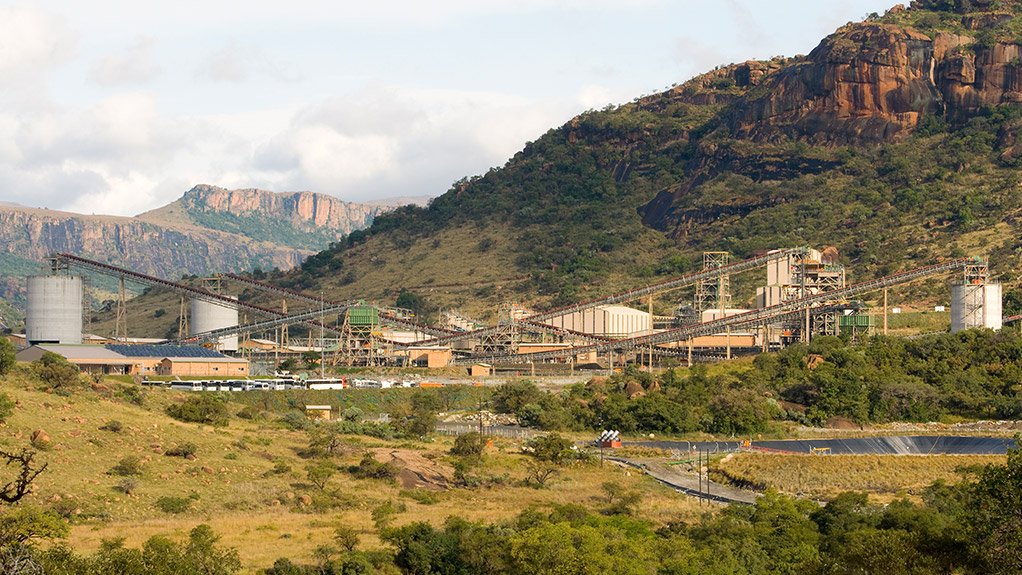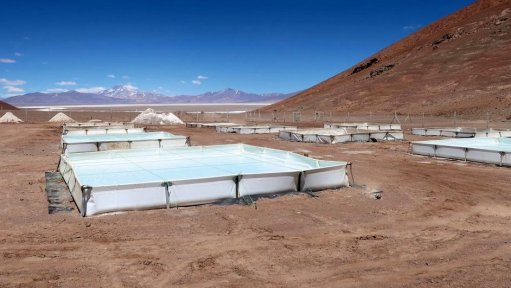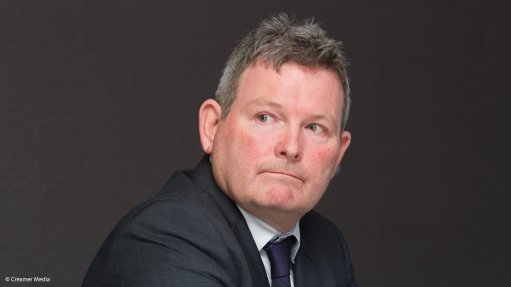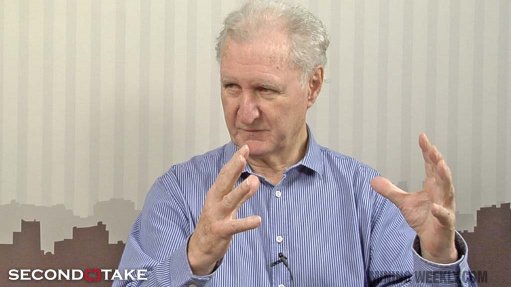Northam Platinum recovers to solid profit in strike-free H1
JOHANNESBURG (miningweekly.com) – South African platinum producer Northam Platinum has swung to a profit attributable to shareholders of R354.1-million for the six months ended December 31, after posting a loss of R92.7-million in the first half of the prior year.
This translated to headline earnings a share of 89.6c.
The company attributed the improvement to higher group production volumes, which impacted positively on unit cash costs, an absence of protracted strike action – which was seen throughout the first half of the prior year – and a higher rand basket price for platinum-group metals, owing to a weaker rand/dollar exchange rate.
Metals sales revenues reached R3-billion in the period under review, reflecting the effects of higher volumes combined with the weakening of the rand by 9.5% year-on-year against the dollar.
This was despite losses of 615 kg and R255-million in production and revenues respectively, resulting from a shaft incident at Zondereinde, in Limpopo.
“Noteworthy is the contribution from Booysendal, [on the border of Limpopo and Mpumalanga], where metal sales ramped up to 1 820 kg – an increase of 59.9% year-on-year,” the group said in a statement on Friday.
A 10.5% increase in group cost of sales to R2.6-billion emanated largely from higher operating costs associated with the improved volumes, higher power costs and the higher labour costs, as well as higher purchases of concentrates from third parties, which were up 9.6% to R265.8-million for the period.
EMPLOYEE RELATIONS
Northam reported that, during the period under review, there had been no labour-related disruptions.
However, post reporting period, the National Union of Mineworkers (NUM) in January embarked on a six-day strike at Zondereinde mine in protest of the company's alleged "flouting" of policies and aims of unilaterally changing sick note and recruitment policies.
The union also called for the resignation of CEO Paul Dunne, alleging that he had attempted to weaken and reverse progressive policies regulating the company’s employee relations.
The strike was brought to an end after workers accepted a draft memorandum developed by both parties that stipulated the design of a process to focus on the issues raised prior to and during the strike.
The parties also agreed to adhere to the Peace and Stability Framework and commit to a multistakeholder “healing process” aimed at resetting the relationship and ensuring stability.
While the NUM remained the dominant union at Zondereinde, representing some 70% of the workforce, the Association of Mine and Construction workers Union had gained sufficient membership to entitle it to organisational rights at Zondereinde.
OPERATIONAL OVERVIEW
The group’s Zondereinde mine performed “well” during the period, with improved tonnages and production.
This was in spite of a shaft incident in July, which rendered the No 1 shaft out of commission for six weeks and resulted in lost production of 615 kg.
“The higher volumes helped to contain unit operating costs, which improved by 4% from R404 674/kg to R388 547/kg year-on-year,” said the group.
The extension of the decline section of the mine had progressed steadily over the six months and, on completion, would extend the mine’s life to more than 20 years.
At the same time, work continued on optimising the exploitation of both orebodies at Zondereinde and entailed the reconfiguration of the concentrator plants and increasing smelter and base metal removal capacity.
Meanwhile, the production ramp-up at the Booysendal mine continued as planned, with the production of metals-in-concentrate increasing by 15.8% to 2 041 kg, illustrating the effect of “significantly improved” concentrator recoveries.
Work continued on investigating the feasibility of mining the Merensky reef at Booysendal mine.
To that end, on-site work had started on a boxcut to extract a bulk sample of Merensky ore to conduct metallurgical test work and to examine the feasibility of using mechanised methods to mine the Merensky reef.
MARKET OVERVIEW
Northam outlined that the PGM markets had remained subdued in 2014, with prices being “generally lacklustre”.
“Markets have been characterised by a surplus of above-ground metal stocks, and dogged by poor macroeconomic conditions in several of the world's key economies.
“Global PGM supplies declined during the year, reflecting the impact of the five-month strike in South Africa and, while demand for metal has been variable across the principal sectors of consumption, the current market deficits for each of platinum, palladium and rhodium have, as yet, failed to impose any significant impact on metal prices,” it stated.
The current reporting period was marked by a decrease in the group dollar basket prices compared with the previous comparative period.
The prices of palladium and rhodium increased by 10% and 25% respectively, while, the price of platinum declined by 8.7%, resulting in the basket price realised falling by 3.1% for the period.
The group rand basket price increased by 8.7% to R415 814/kg, largely as a result of the 9.5% weakening of the rand against the dollar over the six months.
BEE DEAL
Northam added on Friday that the black economic-empowerment (BEE) transaction announced by the company in October had progressed well.
In terms of the transaction, Northam intended to raise R4.6-billion in cash by issuing new shares.
The effect of the transaction would be to increase Northam’s BEE shareholding to 35.4%.
“The deal, which encompasses a parallel capital raising, will facilitate the injection of R4-billion in cash to fund the group’s growth strategy and secures the immediate transfer of economic value to a broad-based historically disadvantaged South African group.
“It further provides Northam with funding to strengthen the group balance sheet, thereby positioning it to exploit value-accretive growth opportunities in the sector,” the company outlined.
In a separate transaction, the group bought an additional 20% of Northam Chrome Producers, which produced chrome from Zondereinde’s tailings,
for R50-million, with effect from August 1.
This brought Northam’s total holding in this subsidiary to 100%.
Comments
Press Office
Announcements
What's On
Subscribe to improve your user experience...
Option 1 (equivalent of R125 a month):
Receive a weekly copy of Creamer Media's Engineering News & Mining Weekly magazine
(print copy for those in South Africa and e-magazine for those outside of South Africa)
Receive daily email newsletters
Access to full search results
Access archive of magazine back copies
Access to Projects in Progress
Access to ONE Research Report of your choice in PDF format
Option 2 (equivalent of R375 a month):
All benefits from Option 1
PLUS
Access to Creamer Media's Research Channel Africa for ALL Research Reports, in PDF format, on various industrial and mining sectors
including Electricity; Water; Energy Transition; Hydrogen; Roads, Rail and Ports; Coal; Gold; Platinum; Battery Metals; etc.
Already a subscriber?
Forgotten your password?
Receive weekly copy of Creamer Media's Engineering News & Mining Weekly magazine (print copy for those in South Africa and e-magazine for those outside of South Africa)
➕
Recieve daily email newsletters
➕
Access to full search results
➕
Access archive of magazine back copies
➕
Access to Projects in Progress
➕
Access to ONE Research Report of your choice in PDF format
RESEARCH CHANNEL AFRICA
R4500 (equivalent of R375 a month)
SUBSCRIBEAll benefits from Option 1
➕
Access to Creamer Media's Research Channel Africa for ALL Research Reports on various industrial and mining sectors, in PDF format, including on:
Electricity
➕
Water
➕
Energy Transition
➕
Hydrogen
➕
Roads, Rail and Ports
➕
Coal
➕
Gold
➕
Platinum
➕
Battery Metals
➕
etc.
Receive all benefits from Option 1 or Option 2 delivered to numerous people at your company
➕
Multiple User names and Passwords for simultaneous log-ins
➕
Intranet integration access to all in your organisation





















